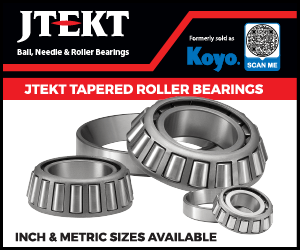![]()
![]()
It is generally believed that the failure of an O-Ring was behind the dramatic and tragic destruction of the Space Shuttle Challenger more than 20 years ago.
So, as you can see, even though they may seem to be an unimportant part of a piece of machinery, O-Rings can be vital. And, there is quite a bit to them.
Specifying an O-Ring requires some care and knowledge. But, like many things, the application of logic and a step-by-step professional approach can produce the right answer and the proper selection.
In the case of O-Rings, there is certain information it is essential to know: ID, OD, cross section, material it is made from, how it will be used to create a seal, and the materials it will come into contact with.
Like many technical products, there is more to know about O-Rings that any human can conceivably master in a lifetime, especially if you have other things to do: like eat, sleep, live and get some work done from time to time.
Not to worry! Dichtomatik, an IBT supplier, has thoughtfully assembled the world’s supply of O-Ring knowledge into one, handy, complete, easy to use and easy to obtain guide: The Dichtomatik O-Ring Handbook, a 225 page compendium of vital information.
As an example, here is how the Dichtomatik O-Ring Handbook provides that essential nugget of knowledge:
O-Ring Installation
The following general guidelines should be observed for installation of an O-Ring to avoid damage and leakage.
- The O-Ring must not be stretched beyond its elongation limit.
- Edges must be burr-free and all radii and angles should be applied smoothly.
- Dust, dirt, metal chips and other foreign material should be removed prior to installation of the O-Ring.
- Tips of screws and installation housings for other sealing and guiding elements should be covered by an assembly sleeve.
- A suitable lubricant should be applied to the assembly surfaces and/or the O-Ring.
- All installation tools (mandrels, sleeves, etc.) should be made of a soft material and not have any sharp edges.
- The O-Ring should not be rolled over assembly surfaces.
- Ensure that the O-Ring is not twisted during installation into the groove.
As an example, here is how the Dichtomatik O-Ring Handbook provides that essential nugget of knowledge:
O-Ring Installation
The following general guidelines should be observed for installation of an O-Ring to avoid damage and leakage.
- The O-Ring must not be stretched beyond its elongation limit.
- Edges must be burr-free and all radii and angles should be applied smoothly.
- Dust, dirt, metal chips and other foreign material should be removed prior to installation of the O-Ring.
- Tips of screws and installation housings for other sealing and guiding elements should be covered by an assembly sleeve.
- A suitable lubricant should be applied to the assembly surfaces and/or the O-Ring.
- All installation tools (mandrels, sleeves, etc.) should be made of a soft material and not have any sharp edges.
- The O-Ring should not be rolled over assembly surfaces.
- Ensure that the O-Ring is not twisted during installation into the groove.





